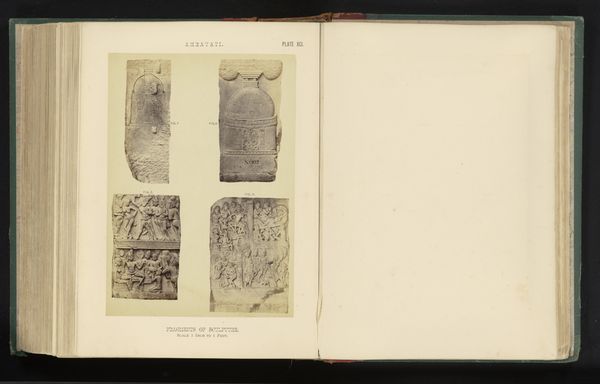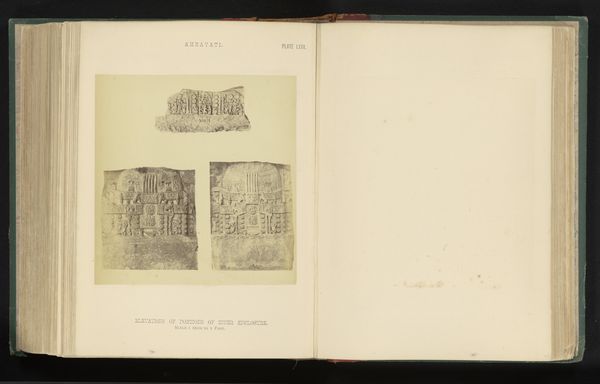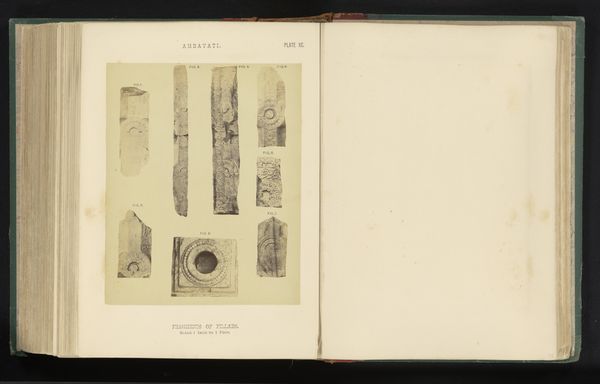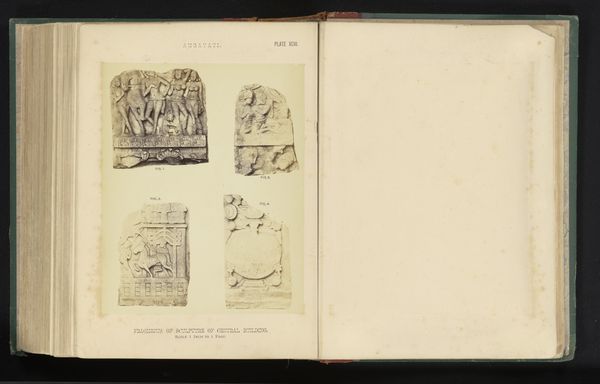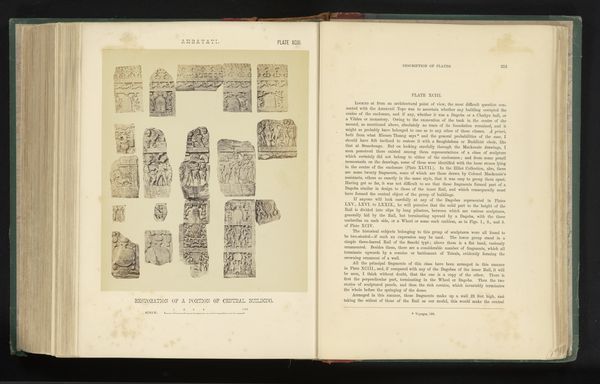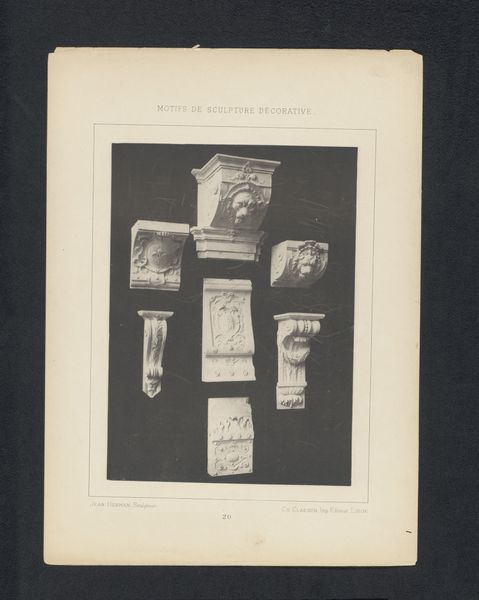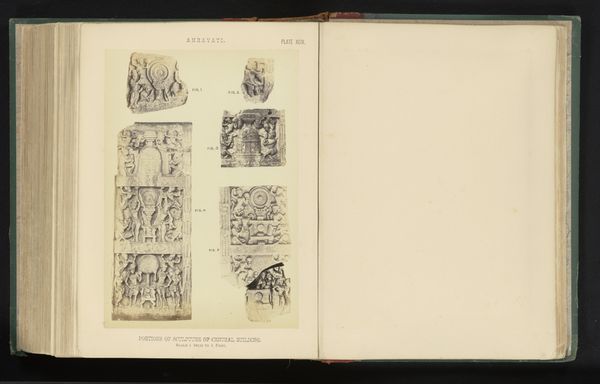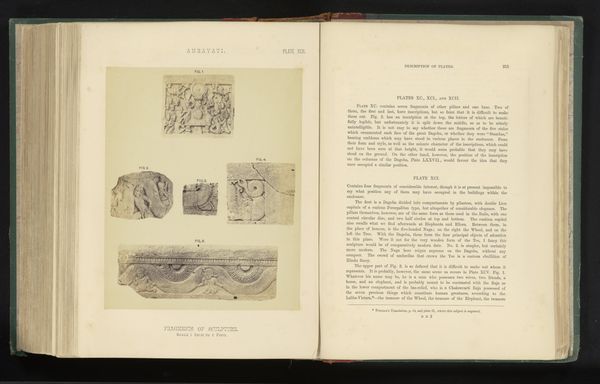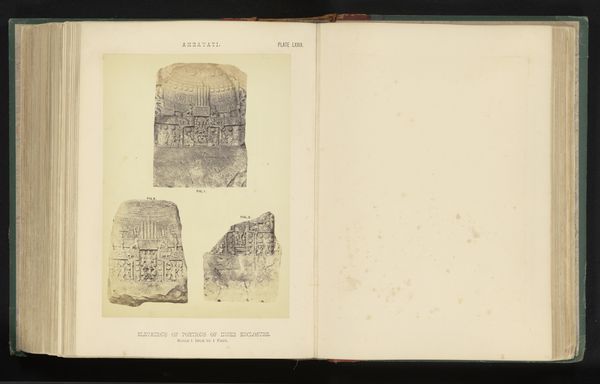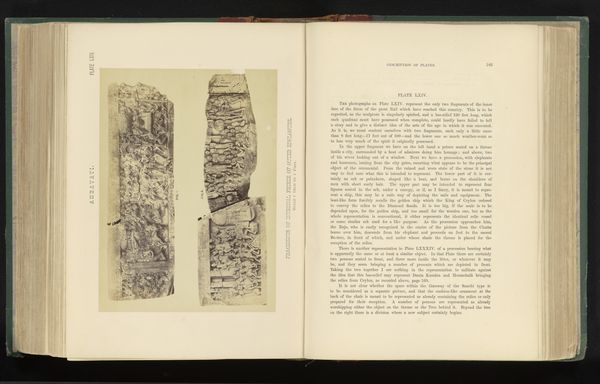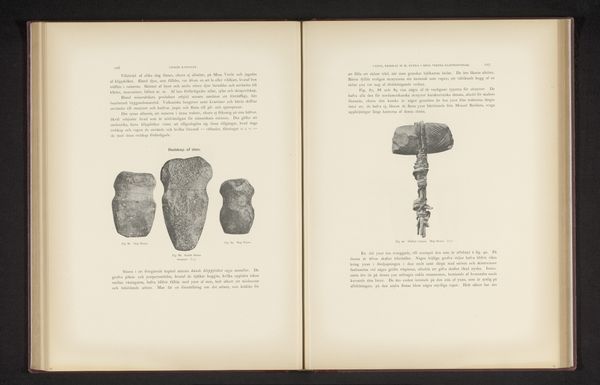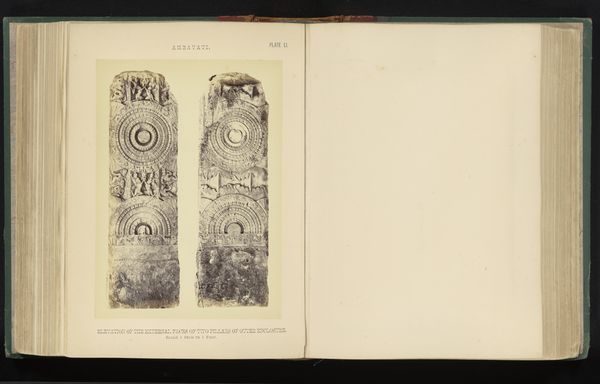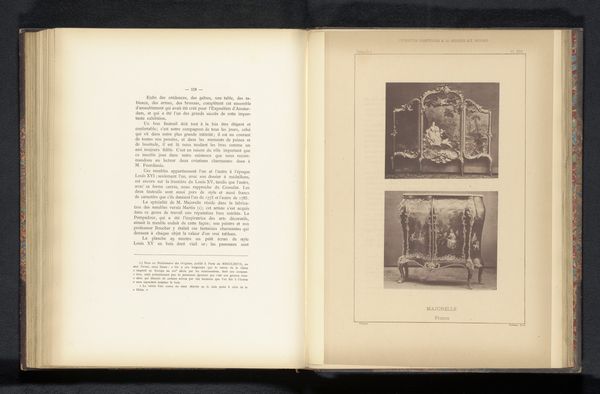
print, sculpture
# print
#
asian-art
#
coloured pencil
#
ancient-mediterranean
#
sculpture
Dimensions: height 228 mm, width 181 mm
Copyright: Rijks Museum: Open Domain
Curator: Here we have “Negen fragmenten van sculpturen,” or “Nine Fragments of Sculptures,” dating back to before 1868 and credited to William H. Griggs. It’s a print of… well, fragments, seemingly of ancient Asian art sculptures. My initial reaction is one of archaeological curiosity mixed with a hint of melancholy. The fragmentation evokes loss, doesn't it? Editor: Indeed. The sepia tones amplify that feeling of something unearthed, a tangible link to a distant past and culture. I'm struck by how the layout almost transforms these sculptures into a scientific record, reminiscent of early anthropological studies. Curator: Precisely. Griggs, working at this time, was deeply influenced by the burgeoning field of archaeology and its impact on public understanding of world history. The display of these fragments is, in essence, a miniature museum, offering viewers access to relics of a lost civilization. Editor: And each fragment pulsates with potential meaning. The figure in the upper center, seemingly intact, has a calm, almost maternal quality to it, amidst these fractured remains. Then your eyes can't help but trace the repetitive carvings on the square pieces to explore their pattern. It’s very psychologically activating. Curator: And it reflects the politics of the period. Colonial powers were actively excavating and documenting artifacts from colonized regions, framing them within European contexts. So, while these sculptures are undeniably beautiful, their presentation here is inseparable from that history of cultural appropriation and study. How is their story impacted by their capture? Editor: Absolutely, but looking at these fragmented forms, I can also not help but perceive a more universal narrative: the cyclical nature of civilizations, the inevitability of decay, yet the enduring power of art to communicate across vast stretches of time. Curator: And that tension – between the specificity of their original context and their appropriation into a different historical and cultural narrative – makes them compelling objects of study, no? I think what strikes me most is this act of attempting to immortalize fragments, which is like acknowledging a certain amount of defeat, no matter the efforts. Editor: Definitely. There’s a somber acknowledgement that informs the artistic work here as Griggs tries to bring to the fore of society something crumbling back into its rawest components. It really inspires a deep reverie about cultural history.
Comments
No comments
Be the first to comment and join the conversation on the ultimate creative platform.
